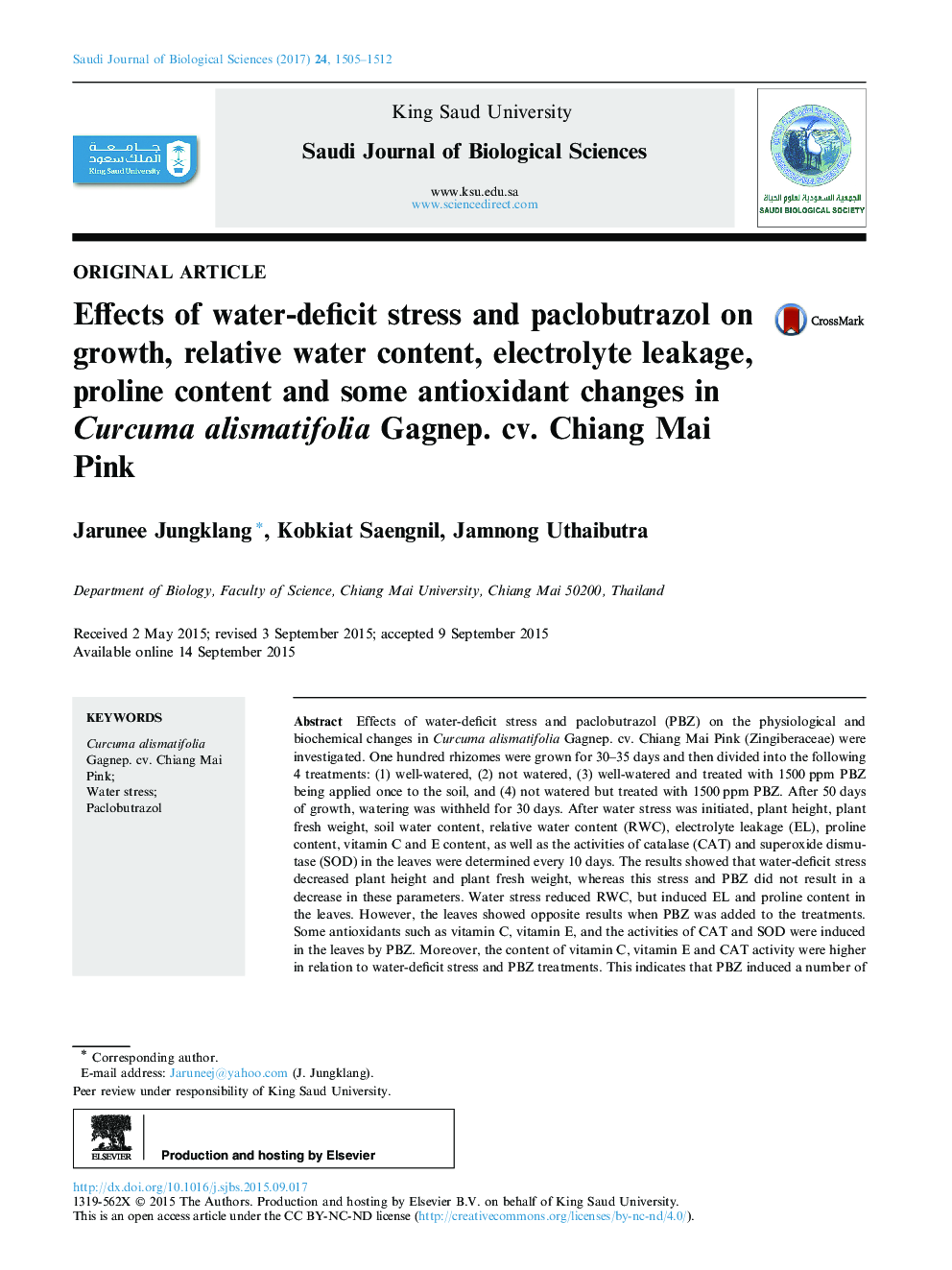| کد مقاله | کد نشریه | سال انتشار | مقاله انگلیسی | نسخه تمام متن |
|---|---|---|---|---|
| 5745405 | 1618662 | 2017 | 8 صفحه PDF | دانلود رایگان |
Effects of water-deficit stress and paclobutrazol (PBZ) on the physiological and biochemical changes in Curcuma alismatifolia Gagnep. cv. Chiang Mai Pink (Zingiberaceae) were investigated. One hundred rhizomes were grown for 30-35Â days and then divided into the following 4 treatments: (1) well-watered, (2) not watered, (3) well-watered and treated with 1500Â ppm PBZ being applied once to the soil, and (4) not watered but treated with 1500Â ppm PBZ. After 50Â days of growth, watering was withheld for 30Â days. After water stress was initiated, plant height, plant fresh weight, soil water content, relative water content (RWC), electrolyte leakage (EL), proline content, vitamin C and E content, as well as the activities of catalase (CAT) and superoxide dismutase (SOD) in the leaves were determined every 10Â days. The results showed that water-deficit stress decreased plant height and plant fresh weight, whereas this stress and PBZ did not result in a decrease in these parameters. Water stress reduced RWC, but induced EL and proline content in the leaves. However, the leaves showed opposite results when PBZ was added to the treatments. Some antioxidants such as vitamin C, vitamin E, and the activities of CAT and SOD were induced in the leaves by PBZ. Moreover, the content of vitamin C, vitamin E and CAT activity were higher in relation to water-deficit stress and PBZ treatments. This indicates that PBZ induced a number of some physiological and biochemical adaptations (maintaining growth and RWC, decreasing EL and proline content, increasing the vitamin C and vitamin E levels, and CAT and SOD activities) that enable the Curcuma plant to tolerate drought.
Journal: Saudi Journal of Biological Sciences - Volume 24, Issue 7, November 2017, Pages 1505-1512
